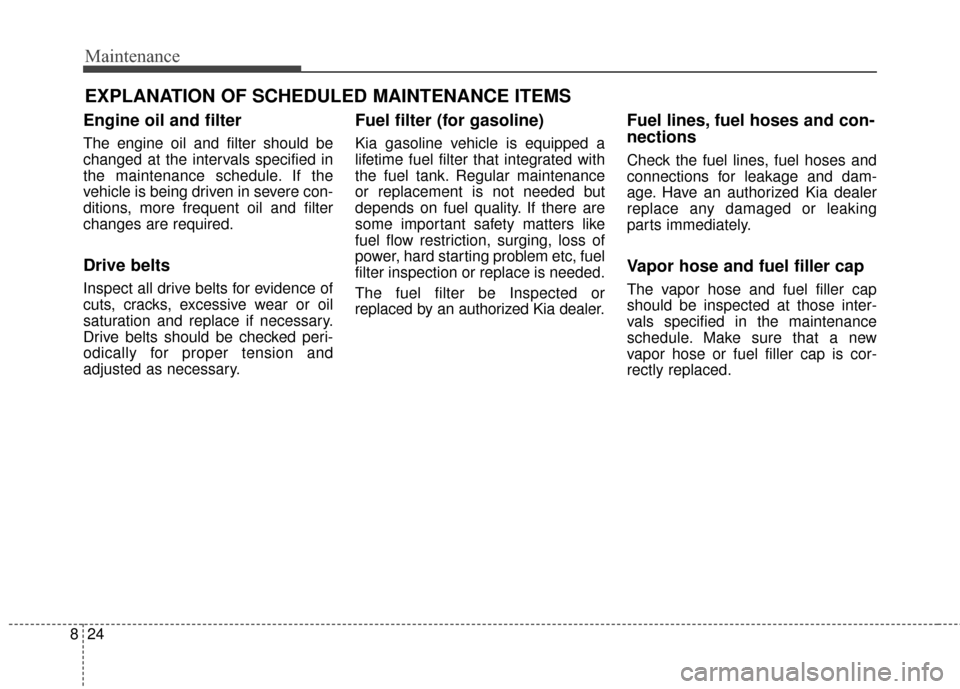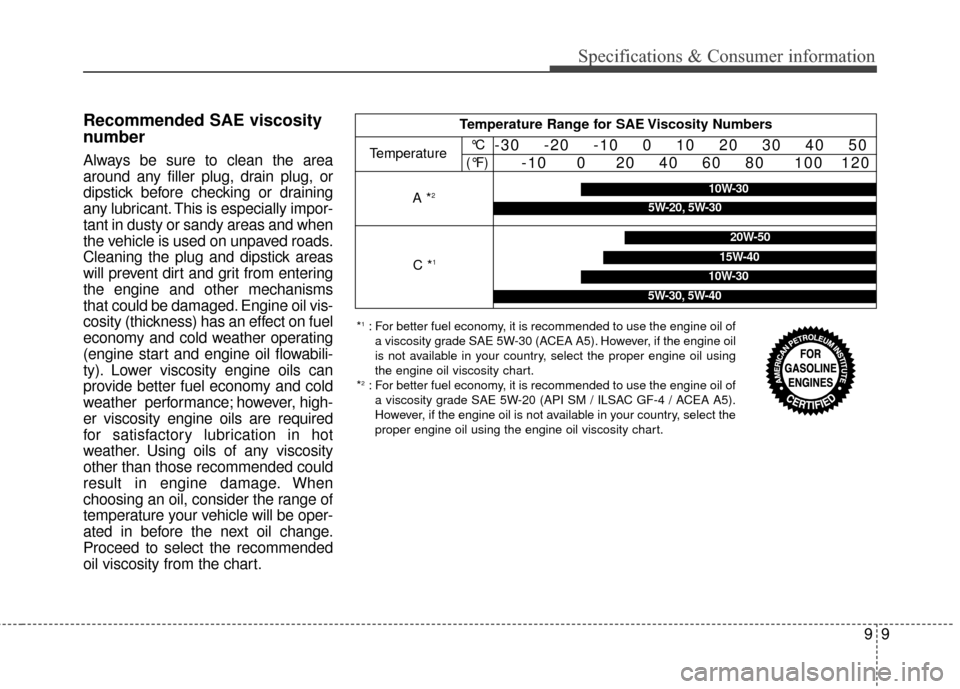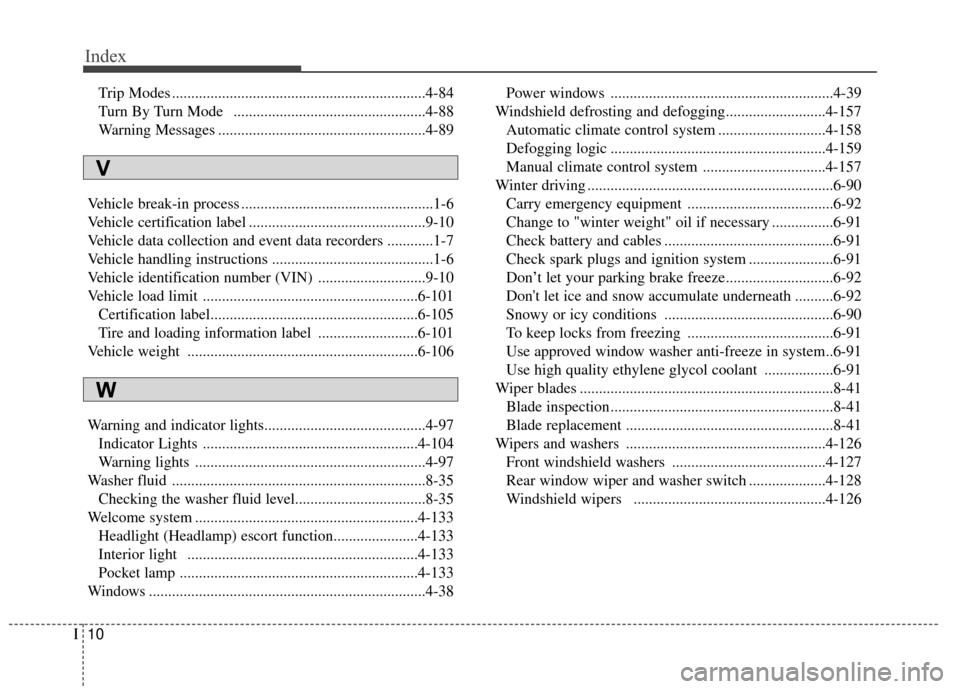Page 492 of 595

Maintenance
24
8
EXPLANATION OF SCHEDULED MAINTENANCE ITEMS
Engine oil and filter
The engine oil and filter should be
changed at the intervals specified in
the maintenance schedule. If the
vehicle is being driven in severe con-
ditions, more frequent oil and filter
changes are required.
Drive belts
Inspect all drive belts for evidence of
cuts, cracks, excessive wear or oil
saturation and replace if necessary.
Drive belts should be checked peri-
odically for proper tension and
adjusted as necessary.
Fuel filter (for gasoline)
Kia gasoline vehicle is equipped a
lifetime fuel filter that integrated with
the fuel tank. Regular maintenance
or replacement is not needed but
depends on fuel quality. If there are
some important safety matters like
fuel flow restriction, surging, loss of
power, hard starting problem etc, fuel
filter inspection or replace is needed.
The fuel filter be Inspected or
replaced by an authorized Kia dealer.
Fuel lines, fuel hoses and con-
nections
Check the fuel lines, fuel hoses and
connections for leakage and dam-
age. Have an authorized Kia dealer
replace any damaged or leaking
parts immediately.
Vapor hose and fuel filler cap
The vapor hose and fuel filler cap
should be inspected at those inter-
vals specified in the maintenance
schedule. Make sure that a new
vapor hose or fuel filler cap is cor-
rectly replaced.
Page 497 of 595
829
Maintenance
If it is near or at L, add enough oil to
bring the level to F.Do not overfill.
Use a funnel to help prevent oil
from being spilled on engine com-
ponents.
Use only the specified engine oil. (Refer to “Recommended lubricantsand capacities” in chapter 9.)Changing the engine oil and
filter
Have engine oil and filter changed by
an authorized Kia dealer according
to the Maintenance Schedule at the
beginning of this chapter.
WARNING
Used engine oil may cause irri-
tation or cancer of the skin if
left in contact with the skin for
prolonged periods of time.
Always protect your skin by
washing your hands thoroughly
with soap and warm water as
soon as possible after handling
used oil.OQLE075103
OQLA075111
■THETA 2.4L - GDI
■THETA 2.0L T-GDI
Page 583 of 595

99
Specifications & Consumer information
Recommended SAE viscosity
number
Always be sure to clean the area
around any filler plug, drain plug, or
dipstick before checking or draining
any lubricant. This is especially impor-
tant in dusty or sandy areas and when
the vehicle is used on unpaved roads.
Cleaning the plug and dipstick areas
will prevent dirt and grit from entering
the engine and other mechanisms
that could be damaged. Engine oil vis-
cosity (thickness) has an effect on fuel
economy and cold weather operating
(engine start and engine oil flowabili-
ty). Lower viscosity engine oils can
provide better fuel economy and cold
weather performance; however, high-
er viscosity engine oils are required
for satisfactory lubrication in hot
weather. Using oils of any viscosity
other than those recommended could
result in engine damage. When
choosing an oil, consider the range of
temperature your vehicle will be oper-
ated in before the next oil change.
Proceed to select the recommended
oil viscosity from the chart.
Temperature Range for SAE Viscosity Numbers
Temperature°C
(°F)-30 -20 -10 0 10 20 30 40 50 -10 0 20 40 60 80 100 120
C *1
20W-50
10W-30
15W-40
5W-30, 5W-40
*1: For better fuel economy, it is recommended to use the engine oil of
a viscosity grade SAE 5W-30 (ACEA A5). However, if the engine oil
is not available in your country, select the proper engine oil using
the engine oil viscosity chart.
*
2: For better fuel economy, it is recommended to use the engine oil of a viscosity grade SAE 5W-20 (API SM / ILSAC GF-4 / ACEA A5).
However, if the engine oil is not available in your country, select the
proper engine oil using the engine oil viscosity chart.
A *210W-30
5W-20, 5W-30
Page 595 of 595

Index
10I
Trip Modes ..................................................................4-84
Turn By Turn Mode ..................................................4-88
Warning Messages ......................................................4-89
Vehicle break-in process ..................................................1-6
Vehicle certification label ..............................................9-10
Vehicle data collection and event data recorders ............1-7
Vehicle handling instructions ..........................................1-6
Vehicle identification number (VIN) ............................9-10
Vehicle load limit ........................................................6-101 Certification label......................................................6-105
Tire and loading information label ..........................6-101
Vehicle weight ............................................................6-106
Warning and indicator lights..........................................4-97 Indicator Lights ........................................................4-104
Warning lights ............................................................4-97
Washer fluid ..................................................................8-35 Checking the washer fluid level..................................8-35
Welcome system ..........................................................4-133 Headlight (Headlamp) escort function......................4-133
Interior light ............................................................4-133
Pocket lamp ..............................................................4-133
Windows ........................................................................\
4-38 Power windows ..........................................................4-39
Windshield defrosting and defogging..........................4-157 Automatic climate control system ............................4-158
Defogging logic ........................................................4-159
Manual climate control system ................................4-157
Winter driving ................................................................6-90 Carry emergency equipment ......................................6-92
Change to "winter weight" oil if necessary ................6-91
Check battery and cables ............................................6-91
Check spark plugs and ignition system ......................6-91
Don’t let your parking brake freeze............................6-92
Don't let ice and snow accumulate underneath ..........6-92
Snowy or icy conditions ............................................6-90
To keep locks from freezing ......................................6-91
Use approved window washer anti-freeze in system..6-91
Use high quality ethylene glycol coolant ..................6-91
Wiper blades ..................................................................8-41 Blade inspection ..........................................................8-41
Blade replacement ......................................................8-41
Wipers and washers ....................................................4-126 Front windshield washers ........................................4-127
Rear window wiper and washer switch ....................4-128
Windshield wipers ..................................................4-126
V
W